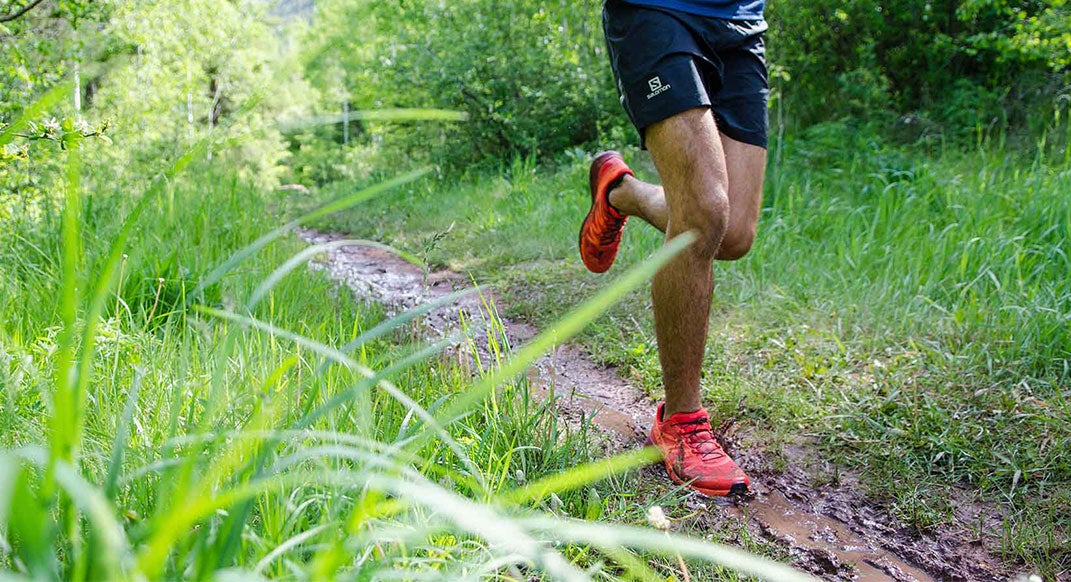Respect the Environment

RESPECT THE ENVIRONMENT
Respecting the environment can be trickier than it sounds. It’s more than just a matter of packing out your trash. It requires planning ahead and solid on-the-ground skills.
For example, some of the worst erosion happens when poorly equipped hikers and trail runners find themselves on an icy trail in the “shoulder” seasons of the spring and fall. Unable to stay on the packed and icy trail, they’ll head off onto the edges, clinging to branches for stability, damaging soft ground and widening the trail. The ideas that follow will help you take care of the environment while also taking you one step closer to a great day on the trails.
Plan Your Run
Getting ready to run? Avoid hassles on the trail, and protect the environment by asking yourself these simple questions:
How am I getting there?
It may not be a direct impact on the trail, but the transportation choices we make do effect our experience on the trail. Many trailheads have limited capacity, so carpooling can reduce overcrowding at the start and finish, and make life easier for land managers. Carpooling and using public transportation also reduce your carbon “footprint” and amount of pollution generated.
TIP: Carpool, or take public transportation at least part of the way.
What are the trail conditions?
Will the weather, time of day, elevation or aspect impact the trail conditions?
Looking out your window, and seeing blue skies and dry, bare ground? Don’t assume that’s what you’ll experience on your run. Conditions may be dramatically different on a trail a few hours later, a few thousand feet higher, and with a different orientation. The beginning or end of the seasons can vary as much as six weeks in the same area, based on a trail’s exposure to the sun and elevation. A trail that’s north-facing and higher in elevation will hold snow and mud longer than one that’s lower and exposed to full sun. South- and west-facing slopes are often the driest.TIP: Stack the deck in your favor. Pick options that are more likely to be snow and mud-free, which usually means lower-elevation, south-facing trails.
Do I have what I need to run down the middle of the trail?
Once you’ve picked your trail, you’ll want to stay on it. When you veer off a trail, you can quickly find yourself on fragile terrain, such as alpine areas, ridgelines or shoreline. These surfaces are easy to damage—the alpine zone, for example, is home to tiny mountain flowers like Diapensia and Moss Campion that can be killed by a single footstep.Most of the time, staying on the trail is easy. But, when you hit unanticipated mud or ice, it can be tempting to hop off. Instead, plan ahead and consider bringing trail-running gaiters, which will keep your feet dry as you plow through mud and pools of water. If conditions may be icy, be prepared by wearing trail-running shoes with metal traction, such as the Salomon Snowcross or Inov8 Arcticclaw.
TIP: Buy gear tailored to the shoulder seasons and winter, such as winter trail-running shoes and gaiters. A pair of trail-running poles will help keep you on the trail, too!
Am I planning for a safe experience?
As trail runners, we operate on thin margins, often bringing just a few essential items. If we get injured, unlike many hikers, we can’t get into a bivouac sack and stay warm. The right to run for miles in remote areas places a great responsibility on us to know what we’re getting into when we hit the trail.Safety issues are covered in detail in SAFETY, but it’s worth pointing out that there’s another victim when someone gets in trouble and needs rescue: the environment. Contrary to the popular image, most rescues are not carried out with a helicopter. Instead, they involve a dozen or more volunteers, who carry the injured person out to the trailhead. That impact of rescuers on the sides of the trail causes trail widening and damages structures like waterbars. Avoid getting in trouble, and you’ll also be taking a big step towards protecting the environment!
TIP: When making plans, pick up the phone and call the land manager—often the US Forest Service, Bureau of Land Management, National Park Service or state park. Most offices have a backcountry specialist who more often than not is someone who loves to be out on the trails. The right contact can be a wealth of information regarding trail closures, recent conditions and other on-the-ground info.